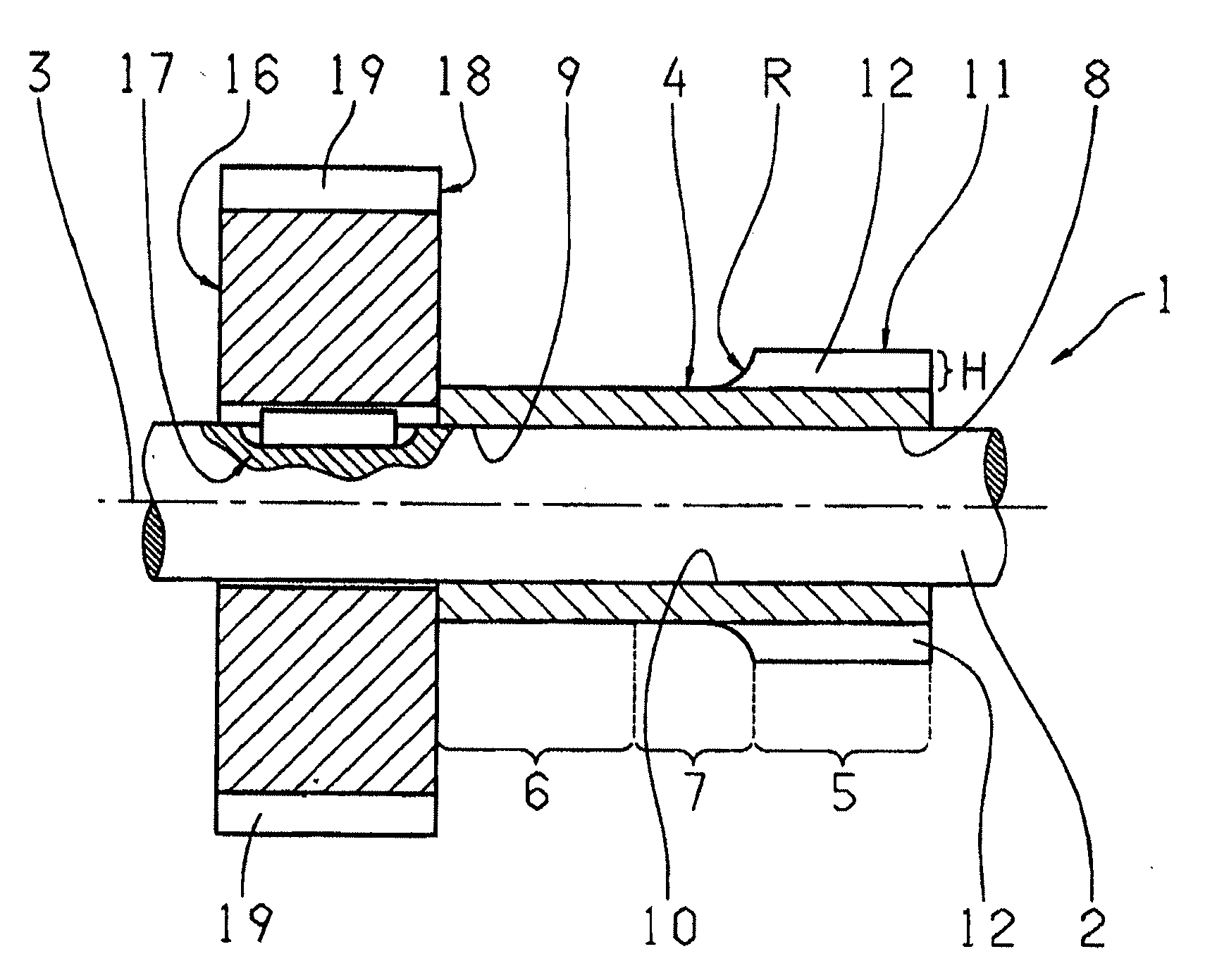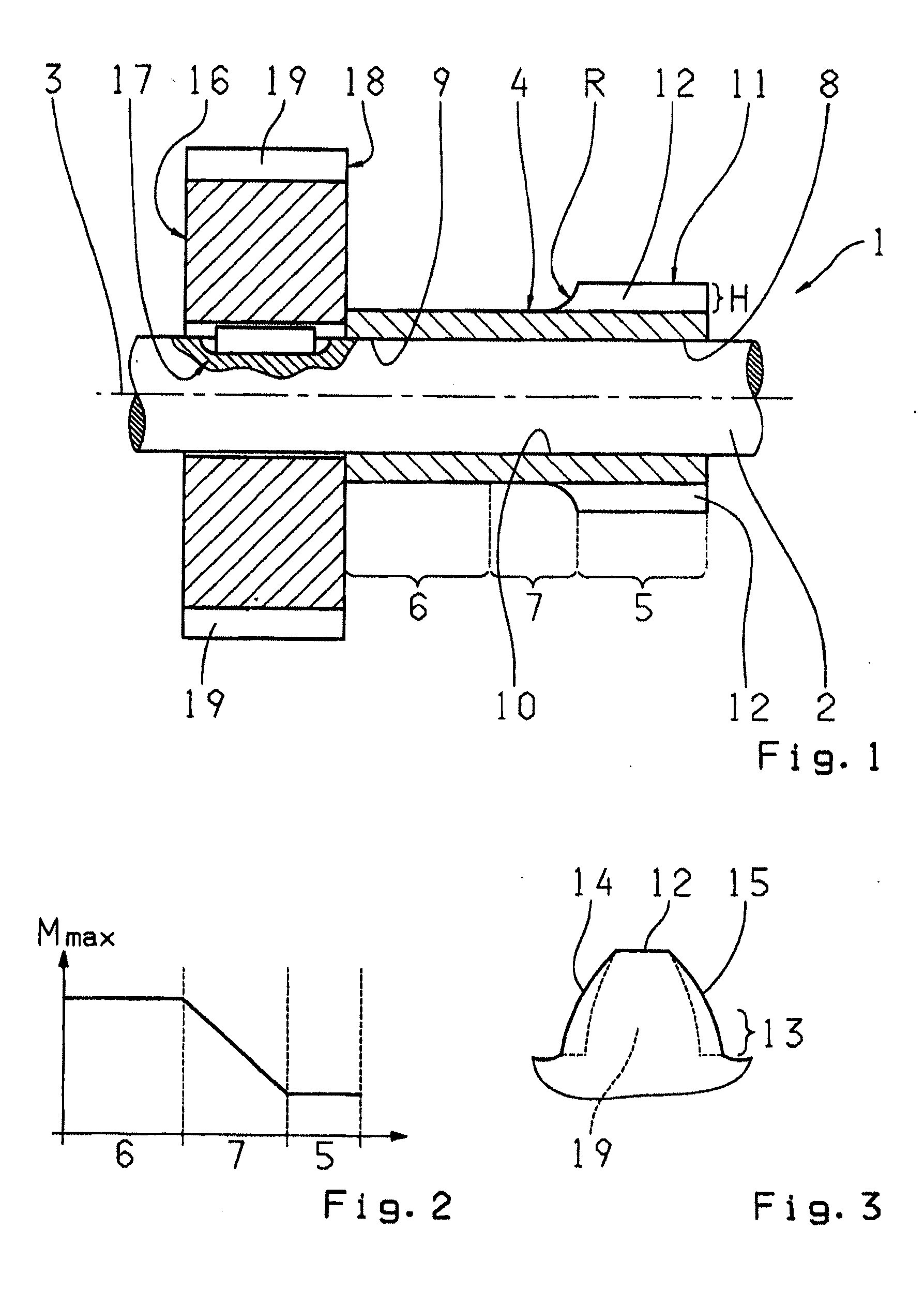Shaft-gear connection
a technology of gear teeth and shafts, applied in the direction of couplings, manufacturing tools, transportation and packaging, etc., can solve the problems of affecting the operation of the gear teeth, the gear teeth are not prevented, and the components are moving, so as to achieve the effect of preventing damage to the gear teeth
- Summary
- Abstract
- Description
- Claims
- Application Information
AI Technical Summary
Benefits of technology
Problems solved by technology
Method used
Image
Examples
Embodiment Construction
[0036]FIG. 1 presents a lateral view of an embodiment of the inventive shaft-gear connection 1. To start with, the shaft-gear connection 1 comprises a shaft 2 that is rotatable around a longitudinal axis 3 thereof. A gear 4 is shrunk-fit to the shaft 2 so as to permanently and constantly rotate with the shaft 2. The gear 4 comprises an axial first section 5 and an axial second section 6, and an intermediate section 7 is provided between the axial first section 5 and the axial second section 6. The first, intermediate and second sections referred to as 5, 7, 6 are integral with and directly attached to one another to form a single, unitary component. The first section 5 has an axial length L5 of typically between 30 mm and 80 mm; the second section 6 has an axial length L6 of typically between 20 mm and 60 mm; and the intermediate section 7 has an axial length L7 of typically between 5 mm and 30 mm.
[0037]The axial first section 5 is attached to the shaft 2 by a first shrink-fit 8, wh...
PUM
| Property | Measurement | Unit |
|---|---|---|
| Diameter | aaaaa | aaaaa |
| Height | aaaaa | aaaaa |
| Surface pressure | aaaaa | aaaaa |
Abstract
Description
Claims
Application Information
 Login to View More
Login to View More - R&D
- Intellectual Property
- Life Sciences
- Materials
- Tech Scout
- Unparalleled Data Quality
- Higher Quality Content
- 60% Fewer Hallucinations
Browse by: Latest US Patents, China's latest patents, Technical Efficacy Thesaurus, Application Domain, Technology Topic, Popular Technical Reports.
© 2025 PatSnap. All rights reserved.Legal|Privacy policy|Modern Slavery Act Transparency Statement|Sitemap|About US| Contact US: help@patsnap.com



